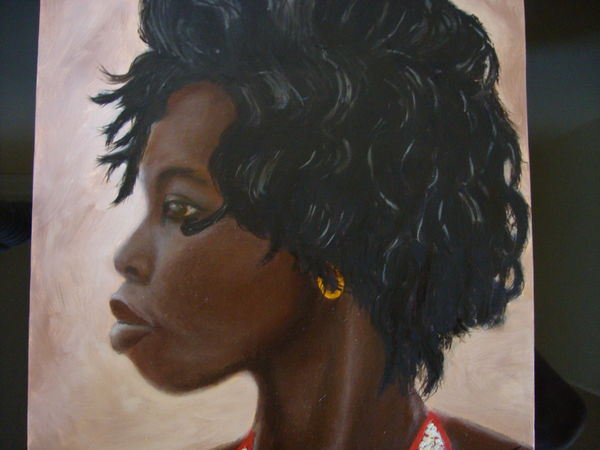Photo to Oil Painting
Oct 24, 2019 12:52:16 #
artBob wrote:
You make very good points.
For a serious photographer, I wonder why they would even want to imitate a painting. For the most part in the art world, "faux" is a bad word. To make a clay sculpture look like bronze, for example, or to try to make watercolor look like oil paint. Such fakery almost always comes off second rate.
If photography is a real art, and I think it is, making it fake being an oil painting makes no sense.
For a serious photographer, I wonder why they would even want to imitate a painting. For the most part in the art world, "faux" is a bad word. To make a clay sculpture look like bronze, for example, or to try to make watercolor look like oil paint. Such fakery almost always comes off second rate.
If photography is a real art, and I think it is, making it fake being an oil painting makes no sense.
The OP asked what I consider a technical question, as to a special effect, and I have no reason to question his motives, ethics, or reasons for what he wants to do. Since, however, you brought up the question "faux" art, I will give you my take.
My entry-level in professional photography was in portraiture so that is what I studied, researched and practice as a student and apprentice. I was inspired by my teachers, mentors and great photographic portraitists of the era, but more so by the works of the old master painters and the more contemporary portrait (painters) artists. The way the were able to see interpret and replicate light, tone and texture fascinated me. Alas- I can not paint but I decided to emulate some of the attributes of my favorite paintings, yet I NEVER attempt to imitate paintings or represent my work as such. I have always tried to apply a "painterly" or artful approach to my work but I never marketed myself as an "artist" and always branded myself a PHOTOGRAPHER and likewise for my business or corporate image.
Even in marketing strategies, I avoid all these hackneyed phrases like "I paint with light...the camera is my brush, etc., etc."! The only bush I Have is the one I use for lens cleaning and I don't do too badly at painting the walls in my office- I prefer a roller!
So...my portraits may be reminiscent paintings, some are mounted on or printed on canvas and have textured surfaces and displayed in sometimes opulent frames. When I opened my first studio in a retail environment in Montreal, the first phrase I had to learn in French was "Ce ne sont pas peintures, ce sont des photographies"- THESES ARE NOT PAINTINGS, THEY ARE PHOTOGRAPHS. That's because many folks would come in and ask about the cost of my "paintings"!
Nowadays, I still do a good volume of corporate and institutional portraiture. In many of our government and corporate buildings, there are portrait galleries of former leaders- Prime Ministers, Premiers, Mayors, Chief of Police, Chairpersons of Boards, Presidents, etc. Many of the older portraits are extremely realistic finely detailed portraits in oil paints. The problem is the contemporary artists that could do this kind of work and come up with a true likeness charge many thousands of dollars and theses kinds of budgets no longer exist in many jurisdictions and companies. So...the come to me for a "poor man's painting"? I always reiterate the I do not paint but I will furnish something that is visually and decoratively compatible with the existing paintings in the gallery. I make it clear that a lightning or finishing technique does not make a photograph into a painting nor are theses elements meant to counterfeit anything.
Even in the commercial aspect of my business, demands have changed from the olden days. I used to do straightforward commercial pictures whereas nowadays we are called upon to produce many special effects and things that were formally in the domain of pre-press lithographic processes. If you think "faux" is a "dirty word", mine is "Photoshop"! Clients come in and want us to "Photoshop" stuff that ain't even in Photoshop or any other software! Gone are the days when straightforward camera-ready transparency was all we had to produce and deliver.
So...agan, if someone asks for technical assistance, I will deliver "nuts and bolts"! If the are not doing anything illegal, immoral or fattening, I won't question their motives.
Oct 24, 2019 12:55:59 #
I have PSE11 and have played around with this in the past. So far as i remember there is an Impressionist plugin which at the time was free. I did not pursue this because at the time i did not like the immediate results and didn't want to spend time improving the result. You can also print on canvas which may interest you as well!
Oct 24, 2019 12:56:57 #
ChazT
Loc: Florida
artBob wrote:
You make very good points.
For a serious photographer, I wonder why they would even want to imitate a painting. For the most part in the art world, "faux" is a bad word. To make a clay sculpture look like bronze, for example, or to try to make watercolor look like oil paint. Such fakery almost always comes off second rate.
If photography is a real art, and I think it is, making it fake being an oil painting makes no sense.
For a serious photographer, I wonder why they would even want to imitate a painting. For the most part in the art world, "faux" is a bad word. To make a clay sculpture look like bronze, for example, or to try to make watercolor look like oil paint. Such fakery almost always comes off second rate.
If photography is a real art, and I think it is, making it fake being an oil painting makes no sense.
You are obviously a serious photographer where I do it for enjoyment. What is your opinion on using apps such as Photoshop? Would it be considered faux if it was altered in any way? I know Ansel Adams was a master in the dark room, altering his photographs by dodging and burning. He considered himself an artist using a photograph as the medium. At what point in post processing would you consider a photograph no longer a photograph but art? Thanks for your insight.
Oct 24, 2019 13:13:57 #
donmikes wrote:
I would like to learn what techniques others use in Photoshop Elements (NOT Photoshop) to make a photo look like an oil painting. My experiments with the various filters as well as with many of the techniques demonstrated on YouTube have usually produced outcomes that look like bad photos -- or really bad paintings. (I have Elements 15.)
Topaz Impression 2 should work with PSE and Ps and other PP. But as I recall I paid $80 for it alone. Nik has some "painting" filters too. Other Topaz modules can be used for painting as well. I'm not sure why you have not been able to come up with something you like with PSE. As far as I know the creative effects filters with both Ps and PSE are similar if not the same. Though with Ps you can work both 16-bit and 8-bit, PSE is only 8-bit. I've only use presets and played with the sliders. I have not tried using Adobe Tool Brushes Manually. This might come as a shock but I've found that the newest versions of MS-Word have a primitive PP module built-in. Thus far I have not figured out how to alter the various effects or filters (bummer). It's Insert>Image>Effect.
Not all photographs lend themselves to being converted to a painterly image. I've done many myself and a lot end up looking like a photo still at low magnification. It seems to be an art in itself to find images that work for various types of effects, be it "oil painting", "water color", or other effect including textured printing paper. Also, often the full potential of a "finished" image is only seen upon printing. So perhaps your experiments that you don't like someone else might like.
Oct 24, 2019 13:34:52 #
donmikes
Loc: Doylestown, PA
E.L.. Shapiro wrote:
Question: What aspects of an oil painting are you trying to imitate or simulate? For example, texture, canvas or linen slabs, brush strokes, glaze, etc.?
If you would post an image that you want this special effect applied to, I may be able to provide you with a simple method.
If you would post an image that you want this special effect applied to, I may be able to provide you with a simple method.
I selected canvas in one of my attempts, but generally I have been experimenting and have not been trying to imitate any particular style.
Please feel free to try your hand at these if you wish:
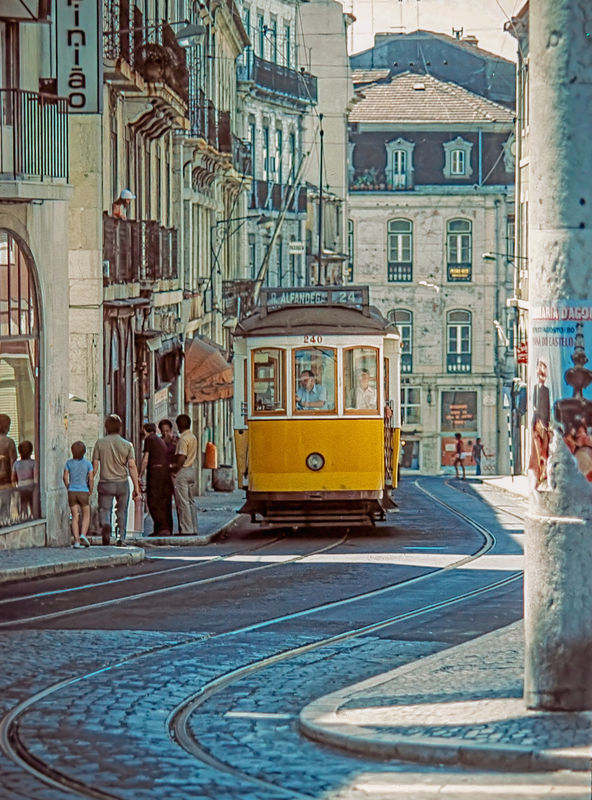
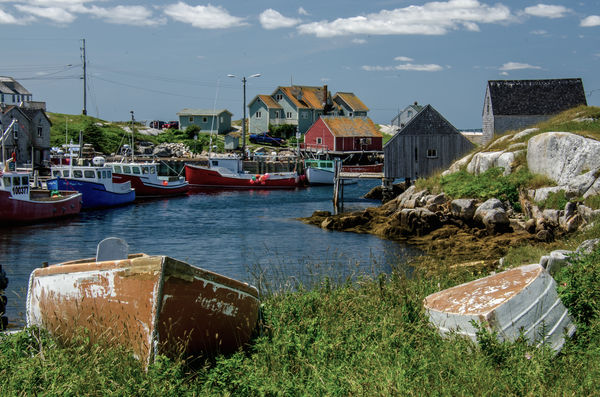
Oct 24, 2019 13:38:42 #
azted
Loc: Las Vegas, NV.
donmikes wrote:
I would like to learn what techniques others use in Photoshop Elements (NOT Photoshop) to make a photo look like an oil painting. My experiments with the various filters as well as with many of the techniques demonstrated on YouTube have usually produced outcomes that look like bad photos -- or really bad paintings. (I have Elements 15.)
I would add that the OP may have a motivation to learn to paint! It is not only a natural ability, but something that can be learned. Regardless of where you live, there is someone who teaches painting. For portraiture, you will need to learn how to paint with oils. For fun, I will attach a painting I did about eight years ago after visiting Senegal. There was a dance performance by the Fulani tribe, and I photographed many of the dancers. I found their faces so interesting, I painted a series of three of them. Attached is the youngest.
Oct 24, 2019 13:40:33 #
Linda From Maine wrote:
Is there anything in the guided edits tab? I've on... (show quote)
Thank you, Linda for suggesting these websites. Dynamic Auto Painter is not free, but Fotosketcher is. I found Dynamic Auto Painter to be more user friendly with many presets, so I decided to get it for $40. I've been looking for something like this for some time.
Oct 24, 2019 14:01:56 #
donmikes
Loc: Doylestown, PA
Linda From Maine wrote:
Is there anything in the guided edits tab? I've on... (show quote)
Linda,
I've tried most of the drop down filters and used the various sliders. I've also used the impressionist brush but primarily with the basic options rather than the specialty choices. As i said. I tried many of the techniques shown on YouTube, which include use of layers.
Below is one attempt that worked pretty well using the palette knife filter, but I haven't been able to achieve the same effect with another photo. The second one was done using the techniques described here: https://www.youtube.com/watch?v=phl48dTE1KI
Thanks for the suggestions about other software.
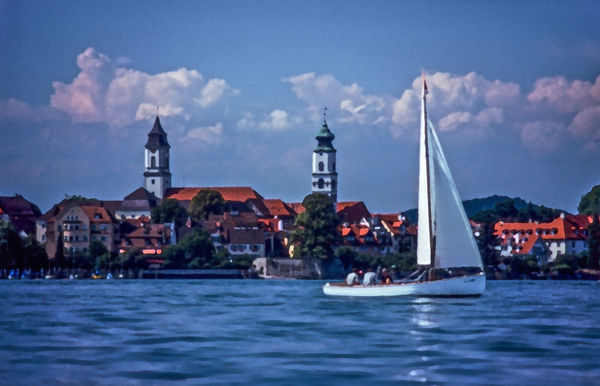
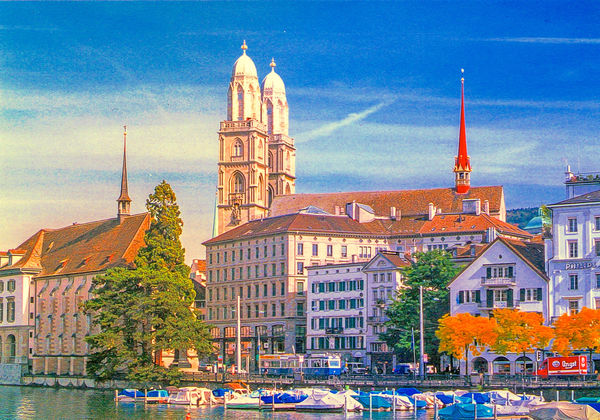
Oct 24, 2019 14:05:06 #
ChazT wrote:
I love this! I have never used that software personally, but might have to look into it Linda, Thanks for the tip about Fotosketcher. Neat effect when I applied it to one of my photos from Bass Harbor. May try the Somesville Bridge next 

 Thanks!
Thanks!Oct 24, 2019 14:07:55 #
lorvey wrote:
Thanks for the correction; I was too hasty in my look/copy/paste Thank you, Linda for suggesting these websites. Dynamic Auto Painter is not free, but Fotosketcher is. I found Dynamic Auto Painter to be more user friendly with many presets, so I decided to get it for $40. I've been looking for something like this for some time.

Oct 24, 2019 14:13:34 #
one_eyed_pete wrote:
I would argue that there is no such thing as "FAUX" or fake art. Art, like music or taste only exists in the brain of the viewer and is manifested by how the perceived image makes us feel. We are all different. If a photographer/artist creates an image that emotes a reaction inside my brain I don't care what procedure the creator used to make it. I simply appreciate it. I do appreciate the painterly effect in the image above.
What do you base your opinion on? All arts have principles such as I mentioned. Even pop music, where a cover band is not featured at any great venue, as a minor example. You might also reference kitsch.
What you say is true, apparently, for yourself, but not true in general. Glad you enjoy things, but would be even happier if yours was a voice for high quality.
Oct 24, 2019 14:13:55 #
donmikes
Loc: Doylestown, PA
artBob wrote:
You make very good points.
For a serious photographer, I wonder why they would even want to imitate a painting. For the most part in the art world, "faux" is a bad word. To make a clay sculpture look like bronze, for example, or to try to make watercolor look like oil paint. Such fakery almost always comes off second rate.
If photography is a real art, and I think it is, making it fake being an oil painting makes no sense.
For a serious photographer, I wonder why they would even want to imitate a painting. For the most part in the art world, "faux" is a bad word. To make a clay sculpture look like bronze, for example, or to try to make watercolor look like oil paint. Such fakery almost always comes off second rate.
If photography is a real art, and I think it is, making it fake being an oil painting makes no sense.
It is possible to be a serious photographer and still want to satisfy one's curiosity about the capabilities of editing software. I prefer photography to oil painting, but sometimes I have an image that I think might also look good as an oil painting. Having no painting skills, I like to play around with a simulated effect.
Oct 24, 2019 14:17:55 #
donmikes wrote:
Both of these are pleasing IMO. I know the frustrations of being unable to achieve same look from photo to photo. This first happened to me when I was attempting to do similar effects for a more cohesive "photo story" series.Linda, br br I've tried most of the drop down fil... (show quote)
There is an online app called befunky (befunky.com) that I believe you can purchase by the month (basic editing tools are free). I have it on my Chromebook, and have been trying several different photos since you posted your topic. No luck with oil paint, but here is Impressionistic on one of yours (you didn't enable download, so this is the 600-pixel width you provided).
The point about befunky I want to make is there are quite a few sliders to tweak an edit or special effect, and with many you can apply your edits selectively. It's a fun, quick app to use if you are online with a device other your main editing computer.
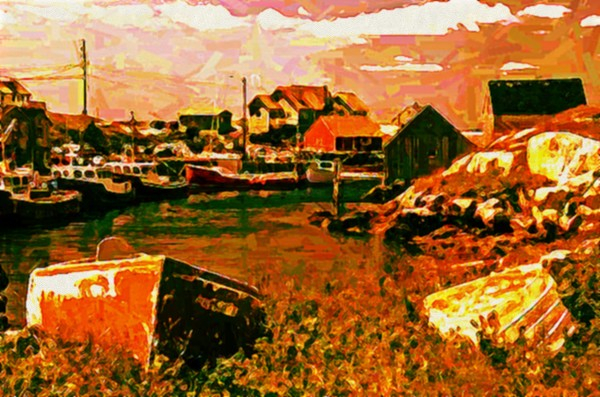
Oct 24, 2019 14:33:17 #
E.L.. Shapiro wrote:
The OP asked what I consider a technical question,... (show quote)
I wish you'd stop bringing up good points--you make my brain hurt! 😊 I'll try to respond to those I can.
I would make a distinction between "painterly" and "artful" in the following quotation from you: "I was inspired by my teachers, mentors and great photographic portraitists of the era, but more so by the works of the old master painters and the more contemporary portrait (painters) artists. The way the were able to see interpret and replicate light, tone and texture fascinated me. Alas- I can not paint but I decided to emulate some of the attributes of my favorite paintings, yet I NEVER attempt to imitate paintings or represent my work as such. I have always tried to apply a "painterly" or artful approach to my work." You apparently re very artful, because you take what the medium of photography gives you ("see interpret and replicate light, tone and texture"), and emphasize or de-emphasize those parts, much like a conductor and an orchestra or a painter and paints and brushes. "Painterly" in the usual sense your photos were not. They did not shave "paint strokes."
Your point about Photoshop I disagree with, AS LONG AS the processing works with what the camera medium gives, as you pointed out: "light, tone and texture" and other elements of value, edge, and shape. Going back to the conductor analogy, just as a conductor works with volume, tempo, timber, various instruments, etc, using Photoshop to work with those camera medium elements is a fine photographic tool.
Finally, under the category of "Manipulated Photography," anything goes. While that might include making a photo look like a painting or sketch, such radical changing to another medium works for popular photography, but not for fine art photography. Applying filters to create a "painting" will get you immediately rejected as fine art in museums and high level galleries. As in music, you need to know your audience if you want to communicate.
Oct 24, 2019 14:37:46 #
E.L.. Shapiro wrote:
Great real life example, Ed. Thank you!...So they (corporations and institutions) come to me for a "poor man's painting." I always reiterate the I do not paint but I will furnish something that is visually and decoratively compatible with the existing paintings in the gallery. I make it clear that a lightning or finishing technique does not make a photograph into a painting nor are these elements meant to counterfeit anything...
If you want to reply, then register here. Registration is free and your account is created instantly, so you can post right away.


